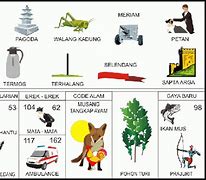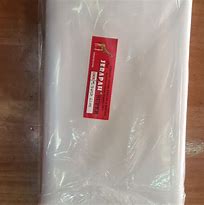
What is a SATA port?
A Serial ATA (SATA) port is a standard interface used for connecting storage devices such as hard drives and SSDs to a computer's motherboard. It allows for high-speed data transfer between the storage device and the motherboard.
The SATA port is usually a small rectangular connector found on the motherboard, typically labeled "SATA" or "SATA 3" for the latest version. It is crucial for connecting storage devices to the motherboard and enabling them to communicate with the rest of the system.
Frequently Asked Questions
Here are some common questions and answers regarding the location of the SATA port on the motherboard.
Mini ITX Motherboards
Mini ITX motherboards are even smaller than Micro ATX motherboards and are ideal for compact and space-constrained builds. Due to their compact size, these motherboards often have a limited number of SATA ports.
The SATA ports on Mini ITX motherboards are typically located along one side of the motherboard. Depending on the layout, these ports may be grouped together or spread out across different areas.
Despite the smaller form factor, Mini ITX motherboards can still accommodate at least two SATA devices, allowing for basic storage options in small and portable systems.
ATX and Micro ATX Motherboards
There are two common motherboard form factors: ATX (Advanced Technology Extended) and Micro ATX. The layout and size of these motherboards can affect the positioning and number of SATA ports.
ATX motherboards are larger and typically have more SATA ports. They may have the SATA ports grouped together along one of the edges or scattered across different areas of the motherboard. The ATX layout offers more flexibility when it comes to expanding storage options due to the availability of additional SATA ports and PCIe slots.
On the other hand, Micro ATX motherboards are smaller in size and have fewer SATA ports compared to ATX motherboards. The SATA ports on Micro ATX motherboards are often grouped together near the bottom of the motherboard. Despite having fewer ports, Micro ATX motherboards can still accommodate multiple storage devices, providing a compact option for smaller computer builds.
Now that we have an understanding of the general layout and positioning of SATA ports on the motherboard, let's discuss how to identify the specific SATA ports.
The SATA ports on the motherboard are typically labeled and numbered for easy identification. These labels are usually printed directly on the motherboard itself, near the corresponding SATA ports. The numbering helps you determine the order in which the SATA ports should be used.
Additionally, the SATA ports are color-coded to differentiate between different specifications, such as SATA 3 (6 Gbps) and SATA 2 (3 Gbps). The color-coding can vary depending on the motherboard manufacturer, but SATA 3 ports are commonly designated with a different color, such as blue, while SATA 2 ports may be white or black.
It is important to consult the motherboard manual or refer to the manufacturer's documentation to ensure you are using the correct SATA port for your specific needs. This ensures optimal performance and compatibility with your storage devices.
While the location and identification of the SATA port on the motherboard are crucial, there are a few additional factors to consider when connecting storage devices:
Mini ITX Motherboards
Mini ITX motherboards are even smaller than Micro ATX motherboards and are ideal for compact and space-constrained builds. Due to their compact size, these motherboards often have a limited number of SATA ports.
The SATA ports on Mini ITX motherboards are typically located along one side of the motherboard. Depending on the layout, these ports may be grouped together or spread out across different areas.
Despite the smaller form factor, Mini ITX motherboards can still accommodate at least two SATA devices, allowing for basic storage options in small and portable systems.
Can I add more SATA ports to my motherboard?
In some cases, it is possible to add more SATA ports to a motherboard using expansion cards or PCIe SATA controllers. These devices can be installed in the PCIe slots of the motherboard and provide additional SATA ports for connecting extra storage devices.
However, it is essential to ensure compatibility with the motherboard and the available PCIe slots before purchasing and installing additional SATA ports. Refer to the motherboard's documentation or consult with the manufacturer for more information on expanding SATA connectivity.
Frequently Asked Questions
Here are some common questions and answers regarding the location of the SATA port on the motherboard.
Can I add more SATA ports to my motherboard?
In some cases, it is possible to add more SATA ports to a motherboard using expansion cards or PCIe SATA controllers. These devices can be installed in the PCIe slots of the motherboard and provide additional SATA ports for connecting extra storage devices.
However, it is essential to ensure compatibility with the motherboard and the available PCIe slots before purchasing and installing additional SATA ports. Refer to the motherboard's documentation or consult with the manufacturer for more information on expanding SATA connectivity.
Where can I find the SATA port on the motherboard?
The location of the SATA port may vary depending on the specific motherboard model, but it is typically found along the edge of the motherboard. Look for a row of small rectangular connectors labeled "SATA" or "SATA 3".
In some cases, the SATA ports may be positioned vertically, facing upwards from the motherboard, while in others, they may be angled or facing sideways. Refer to your motherboard's user manual for the exact location and orientation of the SATA ports.
Exploring Different Motherboard Models
Now that we have covered the basics of locating the SATA port on the motherboard, let's explore the variations that exist across different motherboard models.























